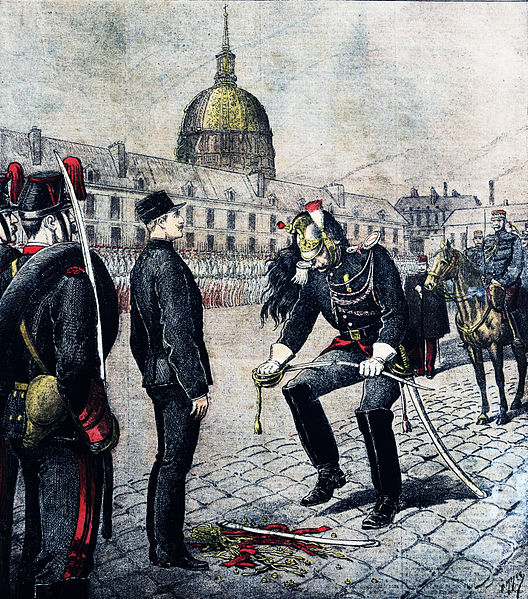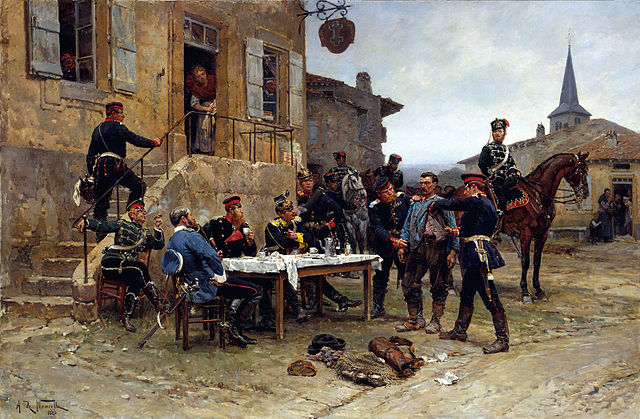Treason is the crime of attacking a state authority to which one owes allegiance. This typically includes acts such as participating in a war against one's native country, attempting to overthrow its government, spying on its military, its diplomats, or its secret services for a hostile and foreign power, or attempting to kill its head of state. A person who commits treason is known in law as a traitor.
A 17th-century illustration of the leaders of the Gunpowder Plot, a failed assassination attempt against James I of England.
5 January 1895: The treason conviction of Captain Alfred Dreyfus.
Russian political activist Vladimir Kara-Murza was sentenced to 25 years in prison for treason and other offences
Engraving depicting the execution of Sir Thomas Armstrong in 1684 for complicity in the Rye House Plot; he was hanged, drawn and quartered.
Espionage, spying, or intelligence gathering is the act of obtaining secret or confidential information (intelligence). A person who commits espionage is called an espionage agent or spy. Any individual or spy ring, in the service of a government, company, criminal organization, or independent operation, can commit espionage. The practice is clandestine, as it is by definition unwelcome. In some circumstances, it may be a legal tool of law enforcement and in others, it may be illegal and punishable by law.
Madame Minna Craucher (right), a Finnish socialite and spy, with her chauffeur Boris Wolkowski (left) in 1930s
An intelligence officer's clothing, accessories, and behavior must be as unremarkable as possible—their lives (and others') may depend on it.
Painting of French spy captured during the Franco-Prussian War







